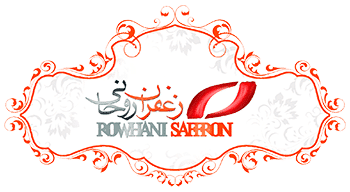Annual production of 300 kg of saffron in Kermanshah
Horticulture director of Kermanshah Jihad Agricultural Organization said: Currently, 300 kg of saffron is produced annually in this province.
Reza Zarei, stating that in the past not much attention was paid to saffron cultivation in Kermanshah province, said: Since 2009, the saffron cultivation program has been on the agenda of the Jihad Agricultural Organization of the province.
According to Zarei, until 2015, the area under saffron cultivation in Kermanshah province was 80 hectares, which this year has reached 90 hectares with the cultivation of another 10 hectares.
Horticulture director of Jihad Agricultural Organization of Kermanshah province added: all cities of Kermanshah province with the exception of Qasrshirin and Sarpolzahab cities have the ability to cultivate saffron.
Zarei stated that the average production of saffron in Kermanshah province is 4.5 kg per hectare and said: Currently, 300 kg of saffron is produced annually in this province.
According to Zarei, there are currently two active saffron packing workshops in the province that package saffron produced in the province under the Kermanshah brand.
Zarei also referred to the development plans of saffron cultivation in the province and said: another 100 hectares of saffron are to be cultivated in the lands of Kermanshah province by the end of this year in a one-year plan.
He also announced a five-year plan to develop saffron cultivation in the province and cultivated 500 hectares and expressed hope that this goal would be achieved with the participation of farmers.
The horticulture director of Kermanshah Jihad Agricultural Organization also referred to the history of saffron cultivation in the west of the country and said: Saffron is a plant whose cultivation dates back to the west of the country, but for some reason its cultivation has not flourished in the west. This plant has been cultivated in the east of the country.
Zarei considered the west of the country as the best place for growing saffron and added: low water requirement, lack of need for advanced equipment and tools and lack of many problems in the process of planting, harvesting and harvesting this product, addressing it in the current situation with the water crisis And the limited water resources we face have made it economical.
Zarei considered saffron cultivation cost-effective in terms of high income generation and added: Saffron cultivation in agricultural lands also prevents the spread of some weeds in the field.
Horticulture director of Kermanshah Jihad Agricultural Organization, pointing out that saffron produced in Kermanshah province has been studied in the laboratory, said: decomposition of saffron collagen produced in the province shows the high capacity of the gene pool of this product compared to the product produced in other places It has a country.
Zarei added: Considering the area under saffron cultivation in the province, from the coming years we will not need to prepare saffron onions to cultivate this crop from other provinces.
He described the best season for planting saffron as August and September and added: From mid-summer to early autumn, it is possible to cultivate saffron in the lands of Kermanshah province.
Zarei, stating that saffron cultivation is supported in the province, said: Saffron cultivation applicants will be provided with good facilities.
Horticulture director of Kermanshah Jihad Agricultural Organization said that the time of saffron harvest is from late October to mid-November and added: saffron harvest in Kermanshah province will continue until rainfall.







Get Social